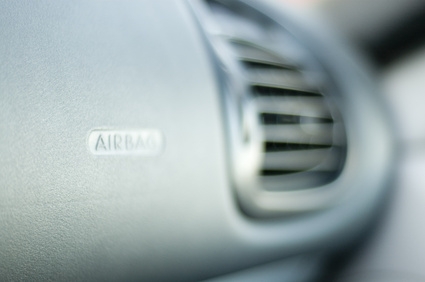
For automakers, safety is a priority, and according to the Insurance Institute for Highway Safety, airbags significantly increase automobile safety. Every new car, including the BMW X5, comes with airbags. If your airbag warning light comes on, or you think there is something wrong, you can check them by plugging in an airbag scanner tool. The tool will give you a numeric code that corresponds to a specific airbag or seatbelt malfunction in your car.
Both airbags and seatbelts are considered part of your BMW X5's Supplemental Restraint System, so some of the codes your scanner tool prints out may deal exclusively with seatbelt problems. Others, like fault code 2, relate to the airbags. If the scanner gives you fault code 2, it means that the driver's side airbag ignition circuit is defective. This code will sometimes be tripped when other parts, such as the steering wheel, are repaired, so a qualified person will need to check the circuit wires to verify the problem.
If this code comes up, it means that the airbag ignition circuit on the passenger side is defective. As with fault code 2, your BMW X5's circuit connections and wires will need to be checked. This should always be done by a professional or an experienced person to avoid injuries or damage to the vehicle.
Sometimes your warning light will not go off, or it fails to come on when you are sure there is a problem. If you check your SRS system and see fault code 19, it means that you may have a faulty warning lamp. Check your light by turning your BMW X5 key to ignition-lock position 1. If the lamp lights and goes out after a few seconds, it is not faulty. If the lamp stays lit, you may need to code your airbag control unit.
Getting this fault code when scanning your BMW X5 means that your airbag squib wires may have short-circuited. The circuit wires to specific numbered pins -- 1, 2, 3, 4, 10, 11, 13 and 14 -- should be checked for short circuits among themselves. As always, mechanical work involving electrical circuits should be done only by an experienced person or qualified professional.